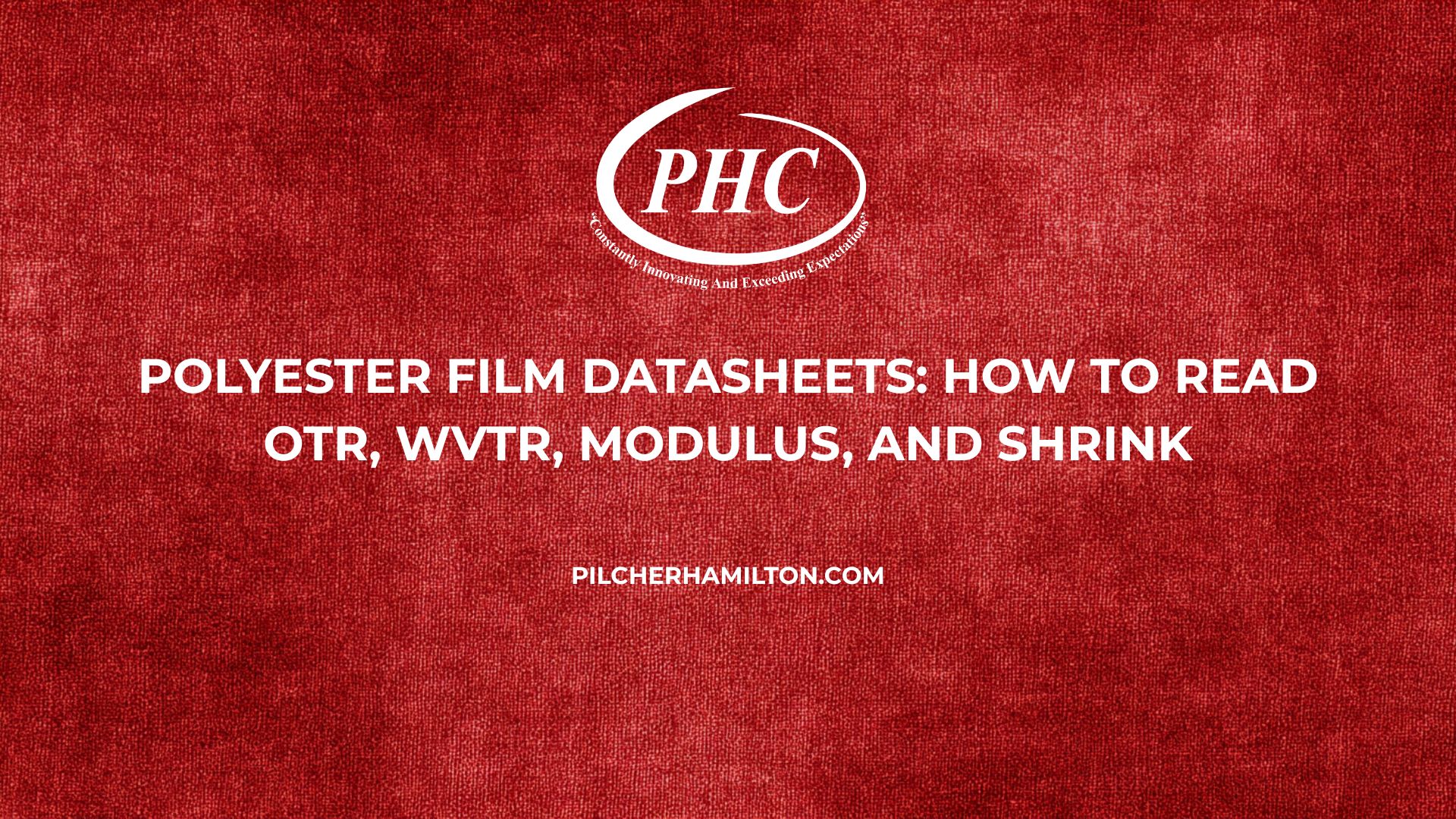Engineers and buyers searching “polyester near me” often rely on datasheets to select the right film for their application. Understanding the terminology and test methods behind numbers like OTR, WVTR, modulus and shrinkage empowers informed decisions. This guide breaks down common datasheet parameters for PET films and explains how to interpret them.
Key Takeaways
- Barrier metrics – OTR and WVTR quantify oxygen and moisture permeability; lower values indicate better barrier.
- Mechanical properties – Modulus, tensile strength and elongation describe stiffness and stretch.
- Thermal & dimensional – Shrinkage and coefficient of thermal expansion indicate dimensional stability during processing.
- Surface & optical – Dyne level, COF, haze and gloss affect printing, handling and appearance.
- Consistency matters – Compare values under identical test conditions and thicknesses.
Core Properties: What Matters Most
Datasheets list physical, thermal and barrier properties measured under standardized conditions. Properties vary with thickness; values are often normalized to a 1 mil (25 µm) film. When comparing films, ensure thickness and test conditions match.
Barrier Metrics (OTR/WVTR)
OTR measures oxygen transmission through film; WVTR measures water vapor transmission. Lower values indicate better barrier. For example, oriented PET shows OTR around 2–6 cc/100 in²/24 hr and WVTR around 16–20 g/m²/24 hr at 1 mil. Metallized or coated films dramatically reduce these values. Use OTR/WVTR to predict shelf life and product compatibility.
Mechanical & Thermal Properties
Modulus (stiffness) is expressed in psi or MPa; higher modulus means stiffer film. Tensile strength indicates how much force the film can withstand; elongation indicates stretch before break. Shrinkage is measured at elevated temperatures (e.g., 150 °C) and reported as a percentage of original dimensions; values below 2 % indicate good dimensional stability.
Surface & Treatment
Surface energy (dyne level) determines ink and adhesive adhesion. Treated PET typically exhibits 50–54 dynes. Coefficient of friction (COF) is measured as static and kinetic values; lower COF indicates slipperiness. Haze quantifies cloudiness; values below 1 % indicate clarity. Gloss measures light reflectance.
Tolerances & QA
Datasheets provide nominal thickness and tolerance (e.g., 48 ga ±5 %). Width tolerance, density and heat‑seal range may also be included. Lot certificates accompany shipments and reference the datasheet. Always confirm that the datasheet matches the grade delivered.
| Property | Units | Typical Value (PET 1 mil) | What It Means |
| OTR | cc/100 in²/24 hr | 2–6 | Oxygen barrier; lower is better |
| WVTR | g/m²/24 hr | 16–20 | Moisture barrier; lower is better |
| Modulus | MPa | 3,000–4,000 | Film stiffness; higher is stiffer |
| Tensile strength | MPa | 150–250 | Force at break; higher indicates strength |
| Elongation | % | 80–120 | Stretch before break; higher indicates flexibility |
| Shrinkage @150 °C | % | <2 | Dimensional stability at high temperature |
| Dyne level | dynes/cm | 50–54 | Surface energy; higher improves adhesion |
| Static COF | – | 0.30–0.45 | Grip/slip; lower is slipperier |
| Haze | % | <1 | Optical clarity; lower is clearer |
FAQ
Why do datasheets list OTR and WVTR? These metrics help predict how well the film protects products from oxygen and moisture ingress.
What is the difference between modulus and tensile strength? Modulus measures stiffness (resistance to stretching), while tensile strength measures the force required to break the film.
Why does thickness matter? Barrier and mechanical properties scale with thickness; thicker films generally have lower OTR and WVTR and higher strength.
How do I know if a film is treated? Datasheets indicate surface treatment (corona, acrylic, chemical) and dyne level. Treated films maintain high surface energy for printing and lamination.
Where can I find polyester near me and technical datasheets? PHC hosts technical datasheets for all PET grades on our website and supplies films from our Greer facility.
Call to Action
Empower yourself to select the right film by understanding datasheets. Pilcher Hamilton Corporation provides comprehensive datasheets and expert guidance. Visit our technical datasheets and film specs pages, or browse all products for our film lineup. If you need help interpreting data, reach out through our locations —our team will make polyester near me more than a search term.
Serving the USA from Greer – South carolina
850 South Buncombe Road
Greer – South carolina
For assistance, contact us via our contact page or view our locations.

